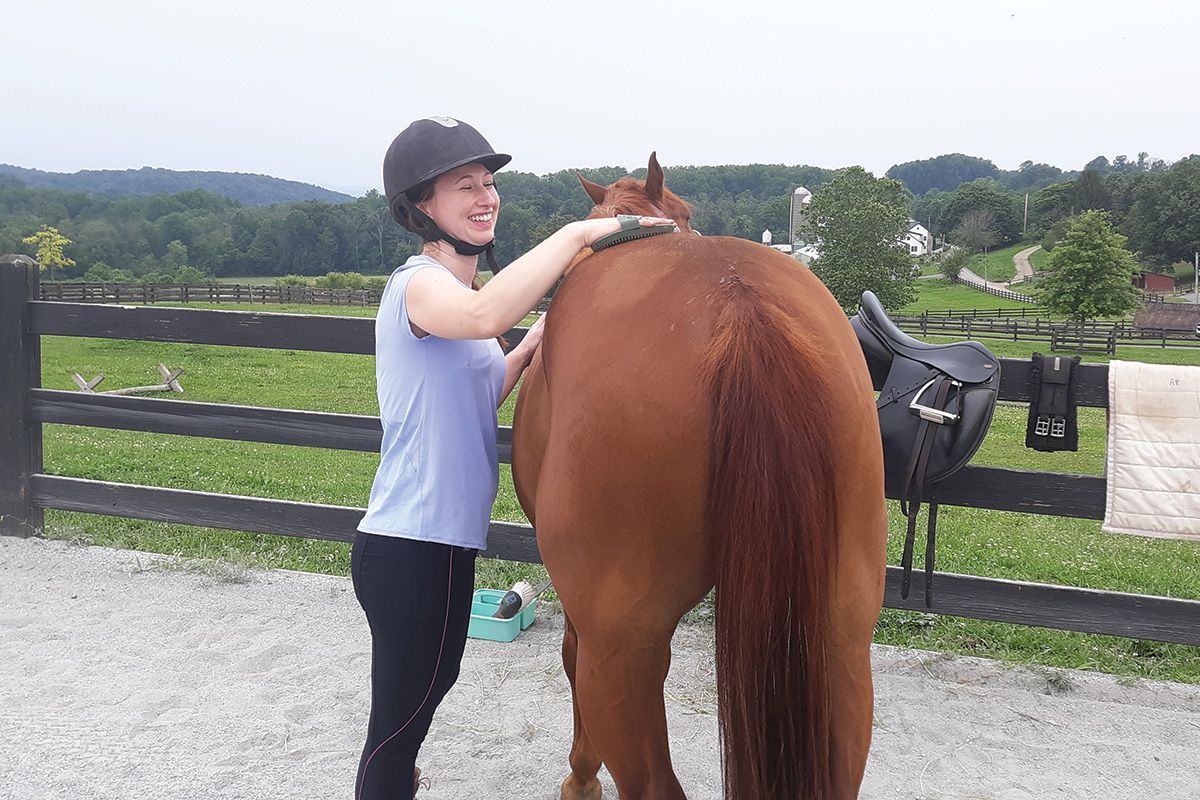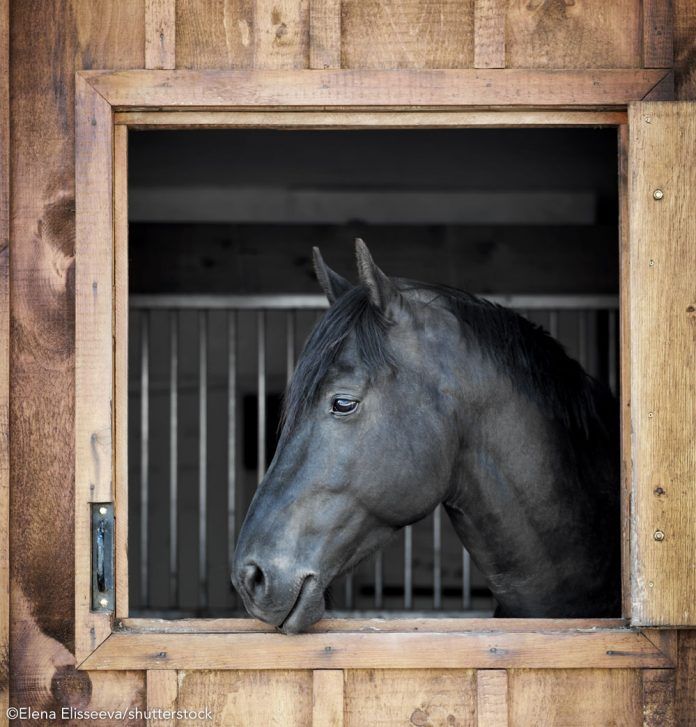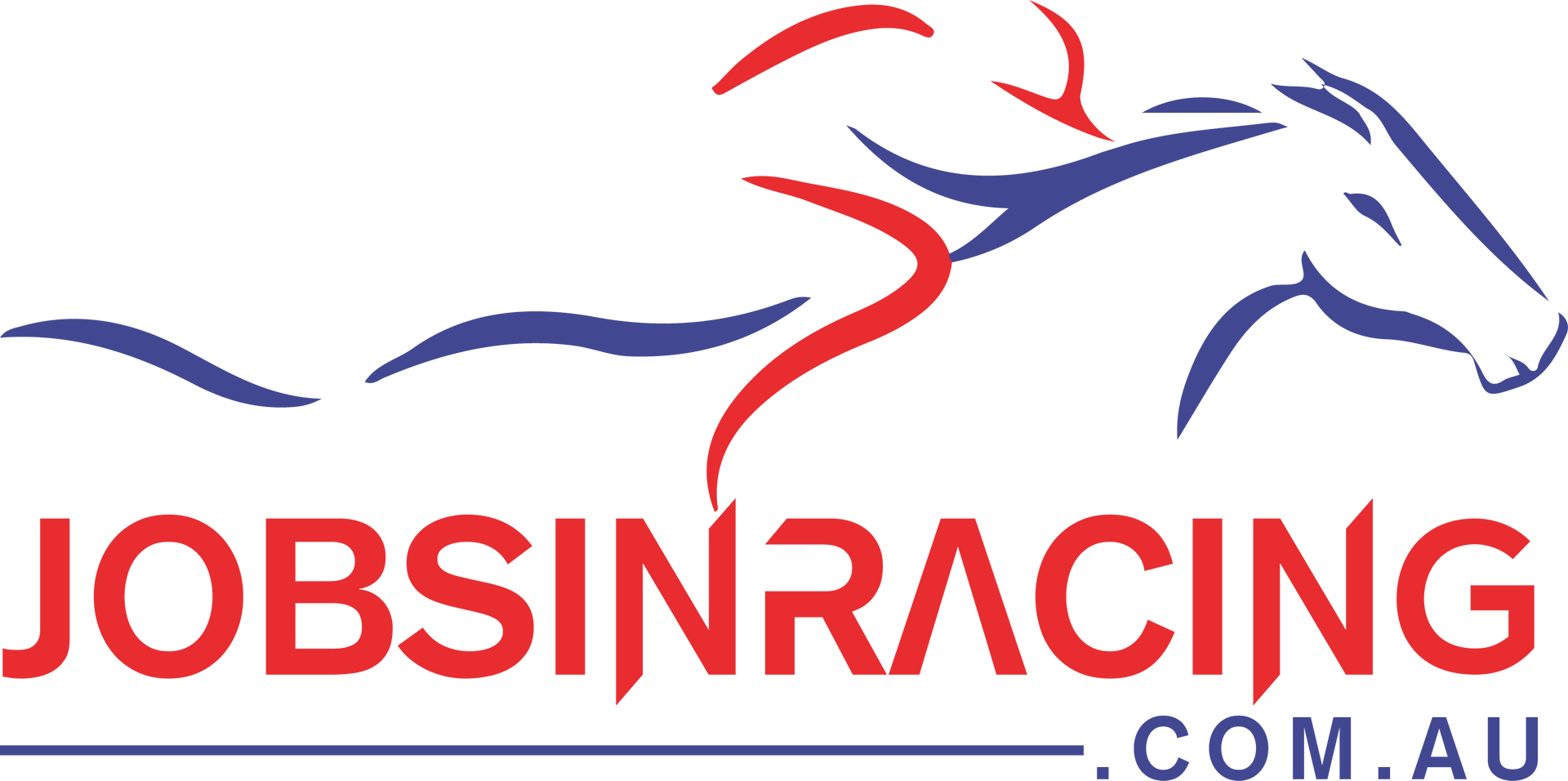Why is my horse hyperactive?
As horse riders, we have all experienced unwanted hyperactive behaviour from our horses at some stage in our riding careers. When it comes to competing we all want our horses to have an enjoyable experience and minimise their anxiety as much as possible. Unfortunately, just like humans, some horses will always be more anxious than others, no matter how much exposure they have.
A horse’s instinctive ‘flight’ pattern is to bolt or run away to protect itself from enemies or pain. There are some breeds that are more in tune with this flight instinct, such as the genetics of Arabians or Thoroughbreds. Education, age and previous experiences also contribute greatly to predisposition and hyperactive behaviour due to horses having great memories!
Yes it is true that some horses will always be naturally more nervous than others, but there are some factors which can trigger and exacerbate this behaviour further. These include:
- Muscle Pain or Injury
- Poor fitting tack/uncomfortable
- Excessive energy
- Vitamin & mineral deficiencies
MUSCLE PAIN OR INJURY
When a horse is suffering from muscle pain or injury they will often express irritability or a resistance to do work. Often these resistances can be confused with hyperactive behaviour such as rearing or bucking.
Consulting a veterinarian, physiotherapist or chiropractor, will help you rule out muscle pain or injury as a cause of hyperactive behaviour.
POOR FITTING OR UNCOMFORTABLE TACK
A poor fitting saddle can cause extreme discomfort for your horses and can attribute to hyperactive behaviour such as rearing, bucking or bolting. When you consider that a horse in moderate work can spend nearly 400 hours under saddle a year, it is extremely important that it is fitted correctly.
Ensuring you have the right size bit for your horse is very important. A bit that is too large will move from side to side and a bit that is too small can pinch or squeeze your horses face causing discomfort and damage.
Seeking advice from a professional saddle fitter and bit specialist will give you peace of mind and can help rule out poor fitting or uncomfortable tack as a cause of hyperactive behaviour.
EXCESSIVE ENERGY
High-spirited behaviour has been directly linked to the energy content of the diet. The horse is unique in that it compensates for excess dietary energy by increasing physical activity. As a result, the horse that receives too much energy (calories) in the diet is more likely to be excessively high spirited.
When assessing dietary provisions, it is essential to differentiate between the energy and the protein content of the diet. High protein does not equate to high energy!
It is important to match your horse’s energy provision with their workload. A 500kg horse in moderate work (3 – 5 hours per week: 30% walk, 55% trot, 10% canter, 5% low jumping) has an energy requirement of 97.53 MJ/Day as stated by the National Research Council.
This means that if the energy provision for this horse exceeded 97.53 MJ/Day they would be in excess of their daily energy requirements, which may result in hyperactive behaviour.
If you are unsure your horses’ energy requirements match the energy provision of the ration you can get your horses diet evaluated by a Ranvet Equine Nutritionist.
VITAMIN & MINERAL DEFICIENCIES
Magnesium plays an important role in nerve and muscle function. Deficient horses can show signs of nervousness, muscle weakness, poor tolerance to work and can predispose ‘tying up’ in performance horses. Magnesium has an important role to play in reducing equine obesity, and can lower the risk in horses prone to laminitis, during periods of fast growing spring grass.
Horses deficient in magnesium display one or some of the following behaviours:
- Unable to relax
- Angry about being brushed, touched or palpated on either side of the spine
- History of tying up
- Does not tolerate long periods of work and becomes more excited rather than working down
- Fractious, nervous and random spooking
- Muscle tremors and twitches
- Teeth grinding
B-Group vitamins perform numerous functions within the exercising horse. They are specifically required for energy generation, adequate function of the nervous system, protein metabolism and red blood cell formation.
Vitamin B1 in particular is necessary for the proper function of the heart and nervous system and is known for its beneficial calming effects and ability to minimise nervous and/or flighty behaviour.
TIPS FOR COUNTERACTING HYPERACTIVITY WITH NUTRITION
- Ensure adequate roughage provision to ensure a healthy digestive tract
- Feed small meals more frequently, large means fluctuate blood sugar levels and can cause changes in temperament.
- Include an oil to the ration as an energy dense, slow release form of energy
- Ensure necessary vitamins and minerals are provided, as deficiencies may cause metabolic stress such as Vitamin B1 and Magnesium.
- DO NOT OVERFEED! Most hyperactivity is due to the overfeeding of starches, sugars and an excess level of energy.
SUPPLEMENTS FOR COMBATING HYPERACTIVITY.
If you have ruled out Muscle Pain or Injury, Poor fitting tack/uncomfortable, Excessive energy and Vitamin & mineral deficiencies then there are supplements that can help with treating hyperactive behaviour.
Ranvet’s Settle’em provides a highly concentrated source of Vitamin B1, magnesium and zinc to acid in the management of nervous and/or anxious horses. The use of Settle’em may rectify nervous twitching, flighty/difficult behaviour, reduce excitability on high grain rations and relieve stress associated with travelling, competition and new surrounds. The powdered formulation is designed to be added to the feed with ease and the provision of 30-60 g Settle’em per day to the ration.
Calm Paste has been specifically designed to provide a natural calming effect, combining a blend of complex B-Group vitamins, magnesium and tryptophan. The supply of these co-factors is associated with reduced aggression and fearfulness. Handy in a portable tube!
Source: https://www.ranvet.com.au/why-is-my-horse-hyperactive/


